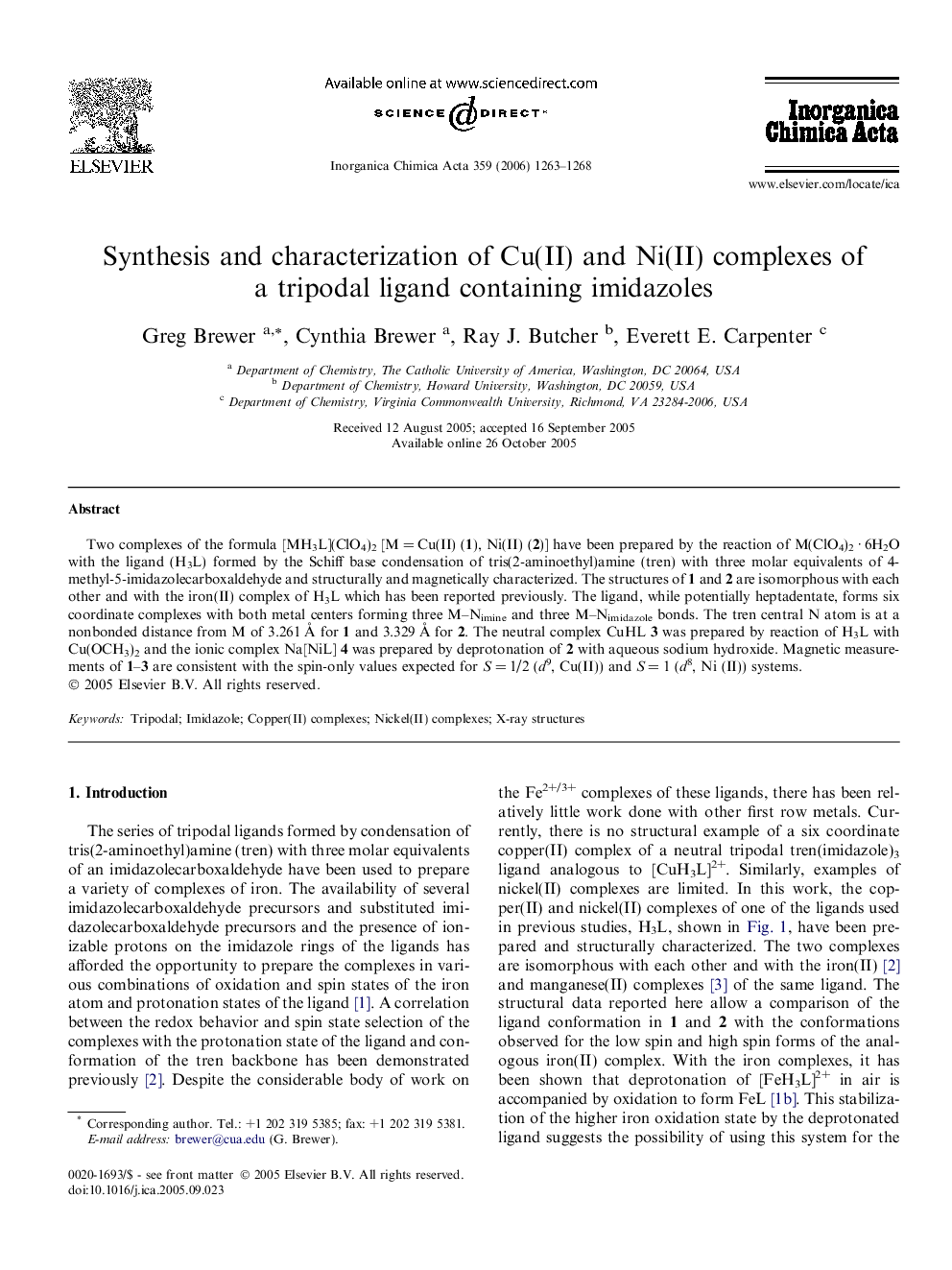| Article ID | Journal | Published Year | Pages | File Type |
|---|---|---|---|---|
| 1308068 | Inorganica Chimica Acta | 2006 | 6 Pages |
Two complexes of the formula [MH3L](ClO4)2 [M = Cu(II) (1), Ni(II) (2)] have been prepared by the reaction of M(ClO4)2 · 6H2O with the ligand (H3L) formed by the Schiff base condensation of tris(2-aminoethyl)amine (tren) with three molar equivalents of 4-methyl-5-imidazolecarboxaldehyde and structurally and magnetically characterized. The structures of 1 and 2 are isomorphous with each other and with the iron(II) complex of H3L which has been reported previously. The ligand, while potentially heptadentate, forms six coordinate complexes with both metal centers forming three M–Nimine and three M–Nimidazole bonds. The tren central N atom is at a nonbonded distance from M of 3.261 Å for 1 and 3.329 Å for 2. The neutral complex CuHL 3 was prepared by reaction of H3L with Cu(OCH3)2 and the ionic complex Na[NiL] 4 was prepared by deprotonation of 2 with aqueous sodium hydroxide. Magnetic measurements of 1–3 are consistent with the spin-only values expected for S = 1/2 (d9, Cu(II)) and S = 1 (d8, Ni (II)) systems.
Graphical abstractM(II) complexes (M = Cu and Ni) of a tripodal ligand containing three imidazole groups were prepared and structurally characterized. The nickel(II) and copper(II) derivatives are isomorphous with the iron(II) complex of the same ligand. Comparison of the tris(2-aminoethyl)amine “backbone” in the copper and nickel structures with that in the iron(II) complex shows a “relaxed” conformation similar to that of the high spin iron(II) analog.Figure optionsDownload full-size imageDownload as PowerPoint slide
